(v12.13.14)
Art, Architecture and Design
This article spotlights a particular building or some other aspect of Columbus design. I welcome your comments, corrections and additions. Please share your experience and perceptions of these uniquely Columbus projects.
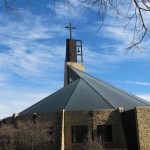 St. Bartholomew Roman Catholic Church
St. Bartholomew Roman Catholic Church
- Built: 2002
- Address: 1306 27th Street
- Design Principal: Steven R. Risting (Ratio Architects – Indianapolis, Indiana)
- Managing Principal: William A. Browne Jr. (Ratio Architects – Indianapolis, Indiana)
- Project Director: Chuck Bauer (Ratio Architects – Indianapolis, Indiana)
- Design Team: Carrie Schulz, Jeff Morgan, Melissa Brewer (Ratio Architects – Indianapolis, Indiana)
- Contractor: Dunlap & Company – Columbus, Indiana
The “new” St. Bartholomew Catholic church was a result of a merger between 2 Catholic parishes; St. Bartholomew (which was previously in a near downtown neighborhood and was established in the early days of Columbus) and St. Columba (near the current site since 1963). Choosing the former St. Columba site because of the existing modern school building as well as having room for future expansion, they began planning for a new sanctuary building to serve the merged congregation.
RATIO Architects of Indianapolis was chosen to design the new sanctuary as a result of an invited design competition. The goals of the church building committee was to create a design appropriate for a “traditional” Catholic parish yet fit into the “modern” architectural heritage of Columbus. The site of the new church was very close to other architecturally rich churches and schools buildings designed by Harry Weese, Leers & Weinzapfel, Norman Fletcher and Eero Saarinen. The resulting design was intended to express the appropriate architectural and material expression of Catholicism, the idea of a progression from secular to sacred and a good blend of the existing St. Columba buildings with the new.
Their needs were for a new worship space for over 900 people, a large Narthex to be used as a gathering space, a large meeting hall, meeting rooms and parish offices. The existing school building (for grades K-8) was also to be expanded with additional classrooms and a gymnasium. A master plan was developed blending the retained existing buildings, the new construction as well as future expansion plans. The building committee along with the architects came up with the following as a description of their plan for the church:
The Seven Concepts of the St. Bartholomew Catholic Church Design
Steve Risting led the design team from RATIO architects. One of the members of his team, Carrie Schultz, was a graduate of the St. Bartholomew School. Risting who began his career with RATIO is now part of CSO architects and has led a major role in a number of other Columbus projects mostly in the downtown area. His design for the school was based around the idea of “a nautilus and a square”, the main worship space is in the shape of a nautilus and the adjoining narthex (with its social functions) as a square. The nautilus was chosen as a sacred shape to represent nature (as an extension of god) while the enlarged square of the narthex represents the creations of mankind.
A nautilus is a small sea creature with a spiral shell. The spiral shell has fascinated people for centuries because of it unique qualities and has been used to represent the inner beauty of nature. Its shape has been analyzed to exhibit logarithmic properties by Descartes, Bernoulli and other philosophers and mathematicians. The nautilus shell is one of a number of known shapes that represent the “golden mean” number or PHI. PHI (1.6180339…..) is a number without an arithmetic solution, the digits simply continue for eternity without repeating themselves. The uniqueness of the golden mean is that it can be found in all living and organic forms. The golden mean number is widely used in art, architecture and in religious symbolism. Researchers have found that humans will consider an art work, architecture and even a face as beautiful if they have the golden mean proportions.
The 21,000 square feet, 900 seat church has a soaring roof structure with abundant natural lighting using a combination of clear and stained glass. The stained glass on the east window was designed by Elizabeth Devereaux in aqua, cobalt blue and lavender glass. Blue was chosen as the symbol of Mary and that of heaven. Red and purple have traditionally been symbolic of Jesus. The window is suggestive of the rigging of a celestial ship showing that we are on a journey on the ship of life. There are future plans to complete the work by expanding the stained glass into the north window.
The bell tower reaches up toward heaven, acting not only as the church’s structural support for the roof but also as the congregation’s symbolic spiritual support. The bell tower was designed to hold three bells but currently only one is in place. It came from the older church downtown and had been in place there since 1935. The spire and roof is sheathed in diamond shaped copper shingles and the openings framed with dark warm wood. Exterior walls are covered in rough-cut golden buff colored Mankato Kasota limestone. The color of the stone facade was chosen because of the warm colors and to incorporate a similar color and texture that was on the exterior of the existing school building. In addition the stone can be honed and polished to a near marble like surface. The finished stone is used in various ways inside and outside the building.
The Kasota limestone is brought into the interior as well, rough cut around the outer perimeters but with lesser degrees of roughness as you reach the most sacred parts of the sanctuary, with it being a fine honed surface in the Blessed Sacrament Chapel. The sanctuary interior is uplifting and inspirational with views to the outside as well as of the stained glass. A large clerestory skylight brings in natural light. The sanctuary is capped by a soaring wood ceiling. Seating is in a fan shape around the altar following the nautilus shape.
The marble altar was moved from the former downtown church. It had been built in the 70’s using pieces of marble from the side altars that were over 100 years old. The Blessed Sacrament Chapel (Reservation Chapel) is directly behind the main altar and is accessible from the altar or from the hallway adjacent to the nursery. This sacred space holds the Catholic Tabernacle and can be used for private prayer. A stained glass window (called the Good Shepherd window) from the downtown church was moved to this hallway.
The Baptismal Font is in the narthex and can be used by the congregation to bless themselves with holy water as they enter the church. It allows for immersion baptism by adults and children. The font is in the nautilus shape and built of Kasota limestone.
St. Bartholomew dedicated their new sanctuary on March 5th, 2002. Construction of a new gymnasium and other educational building improvements were completed in 2003.
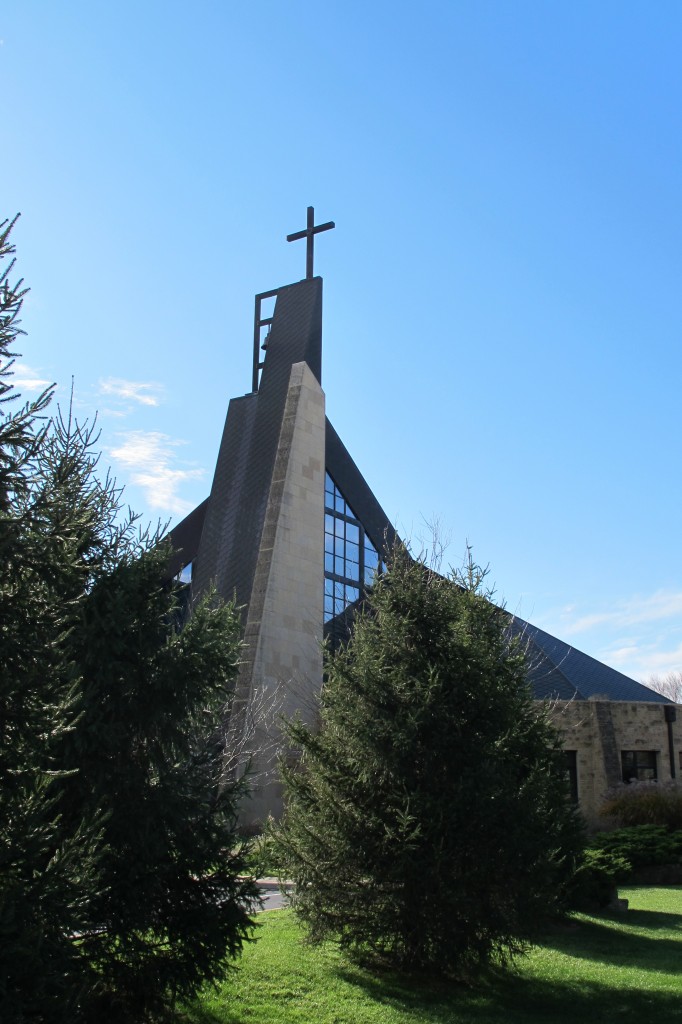 St. Bartholomew Roman Catholic Church
St. Bartholomew Roman Catholic Church
(photo by Ricky Berkey)
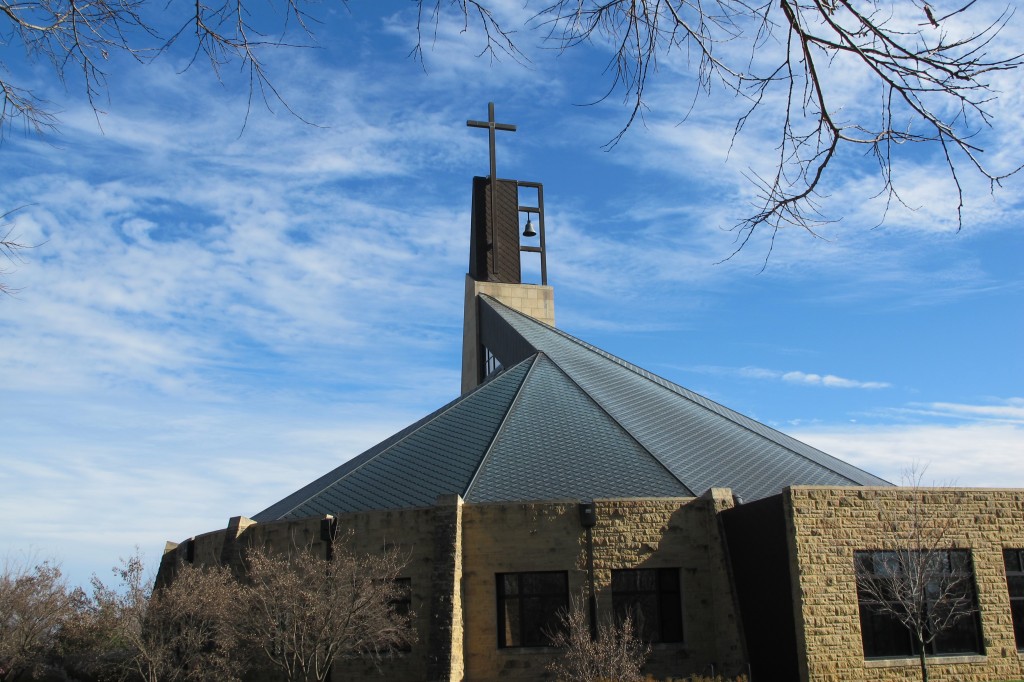 St. Bartholomew
St. Bartholomew
(photo by Ricky Berkey)
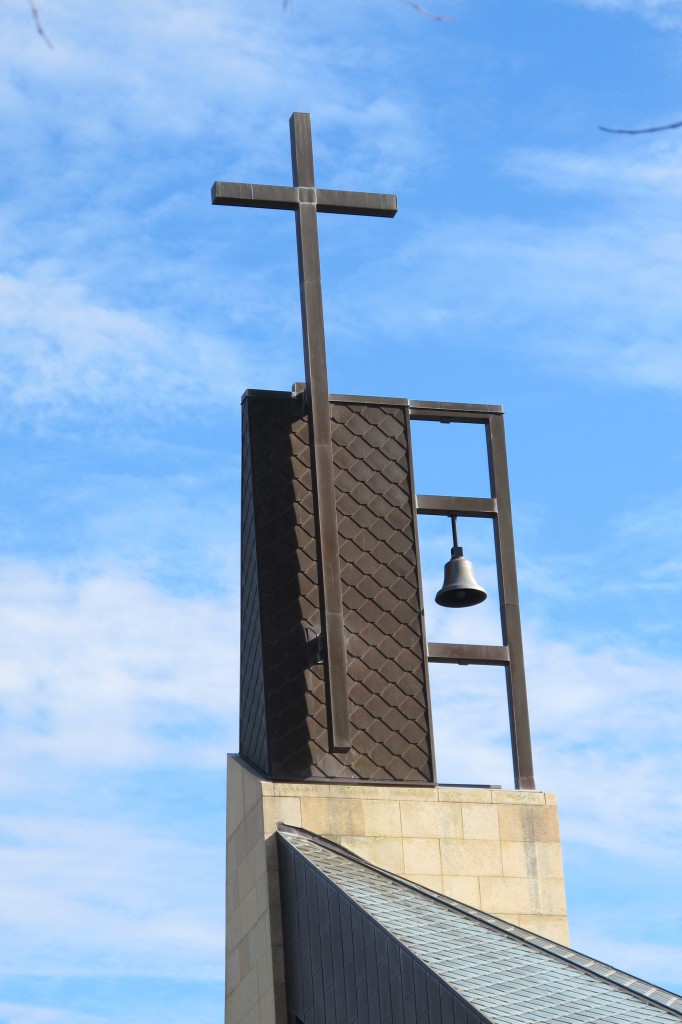 Closeup of the bell tower, the tower is a structural element of the building supporting the roof
Closeup of the bell tower, the tower is a structural element of the building supporting the roof
(photo by Ricky Berkey)
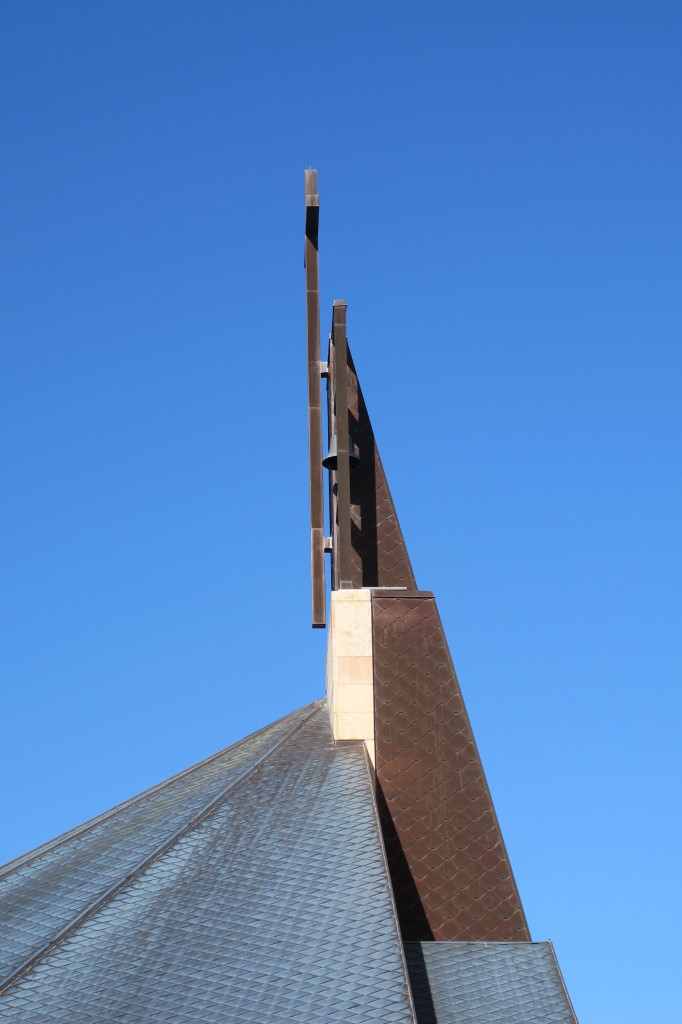 Side view of the bell tower
Side view of the bell tower
(photo by Ricky Berkey)
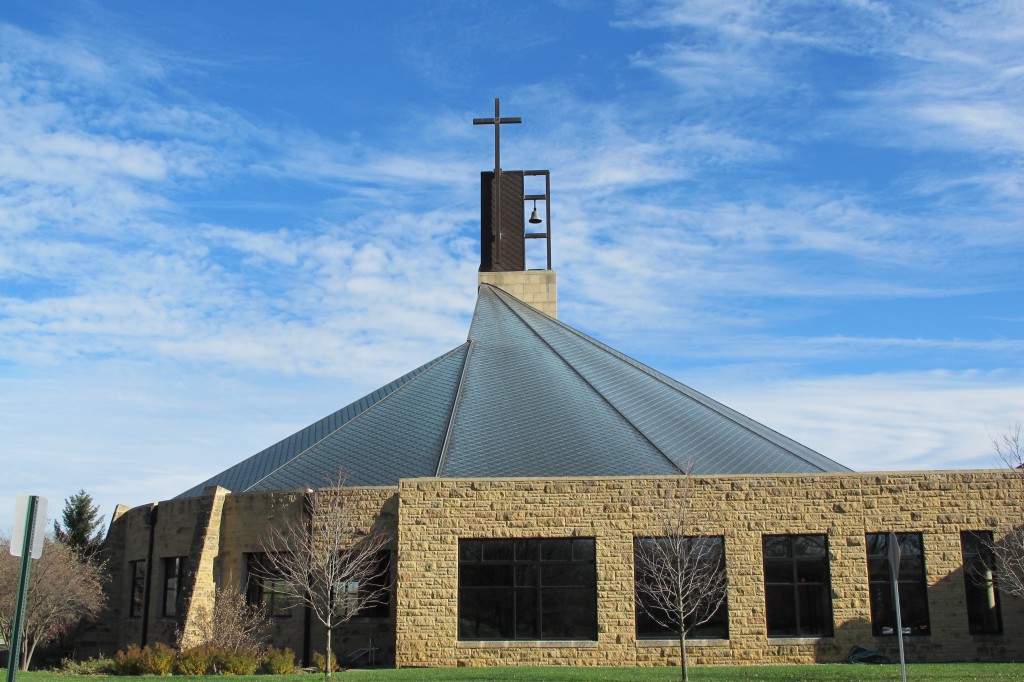 Notice the rough hewn Kasota limestone
Notice the rough hewn Kasota limestone
(photo by Ricky Berkey)
 St. Bartholomew
St. Bartholomew
(photo by Ricky Berkey)
 Clerestory window over the narthex
Clerestory window over the narthex
(photo by Ricky Berkey)
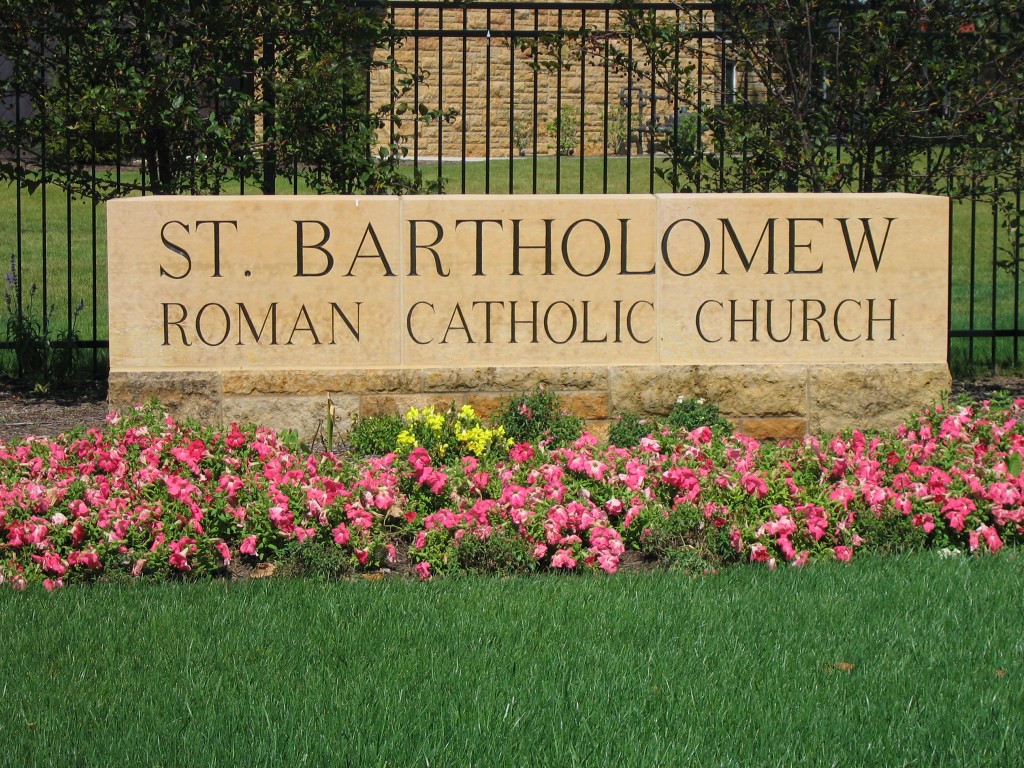 St. Bartholomew
St. Bartholomew
(photo by Ricky Berkey)
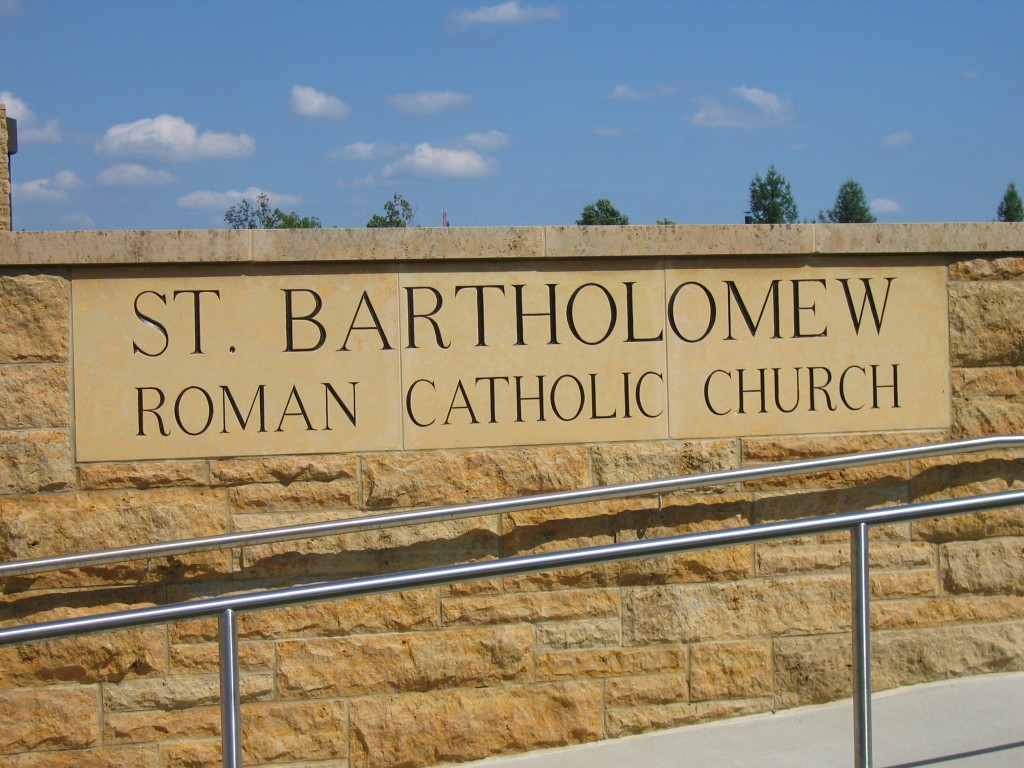 St. Bartholomew
St. Bartholomew
(photo by Ricky Berkey)
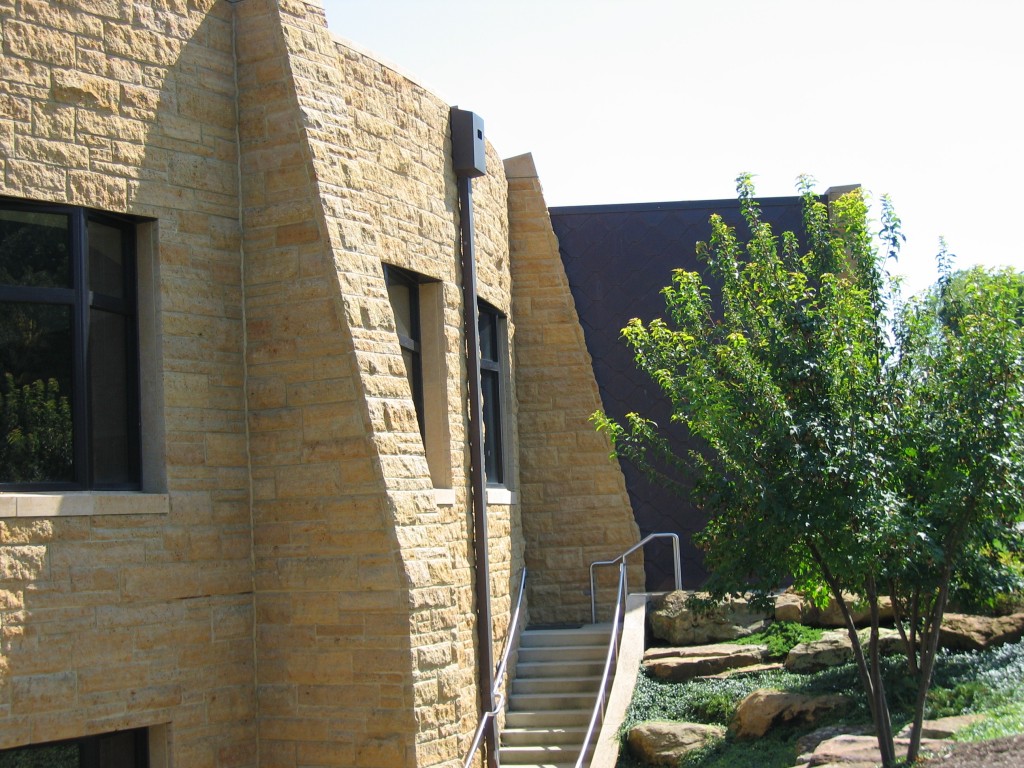 Notice the rounding walls of the sanctuary forming the shape of the nautilus
Notice the rounding walls of the sanctuary forming the shape of the nautilus
(photo by Ricky Berkey)
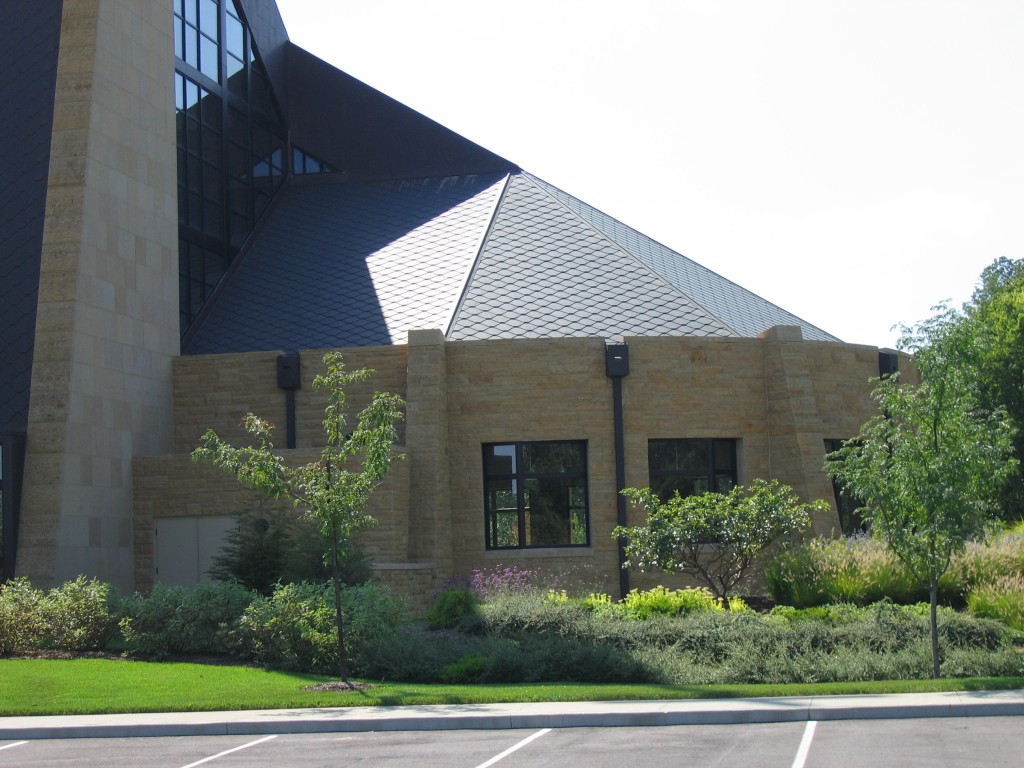 St. Bartholomew
St. Bartholomew
(photo by Ricky Berkey)
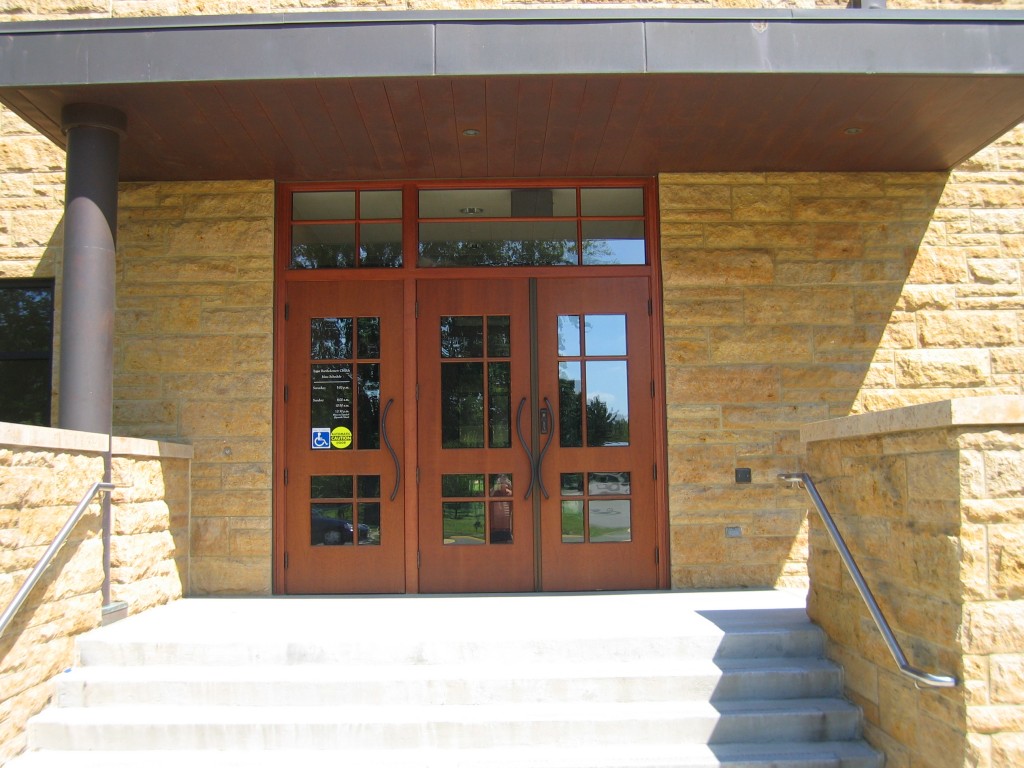 Entrance to the narthex
Entrance to the narthex
(photo by Ricky Berkey)
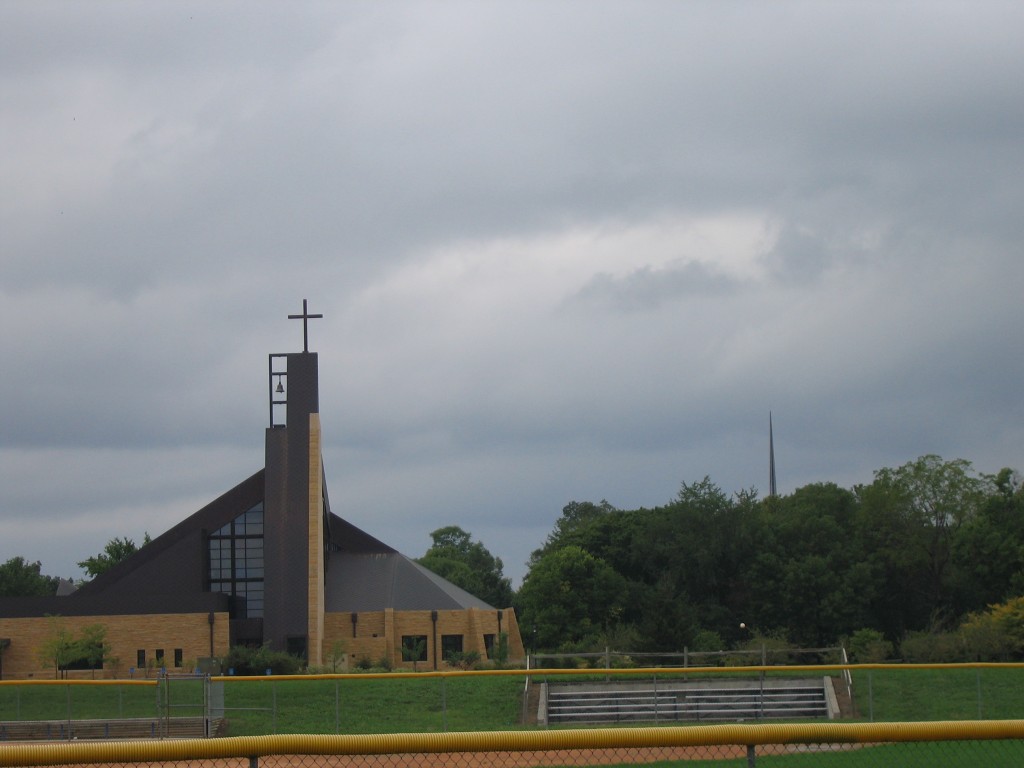 St. Bartholomew
St. Bartholomew
(photo by Ricky Berkey)
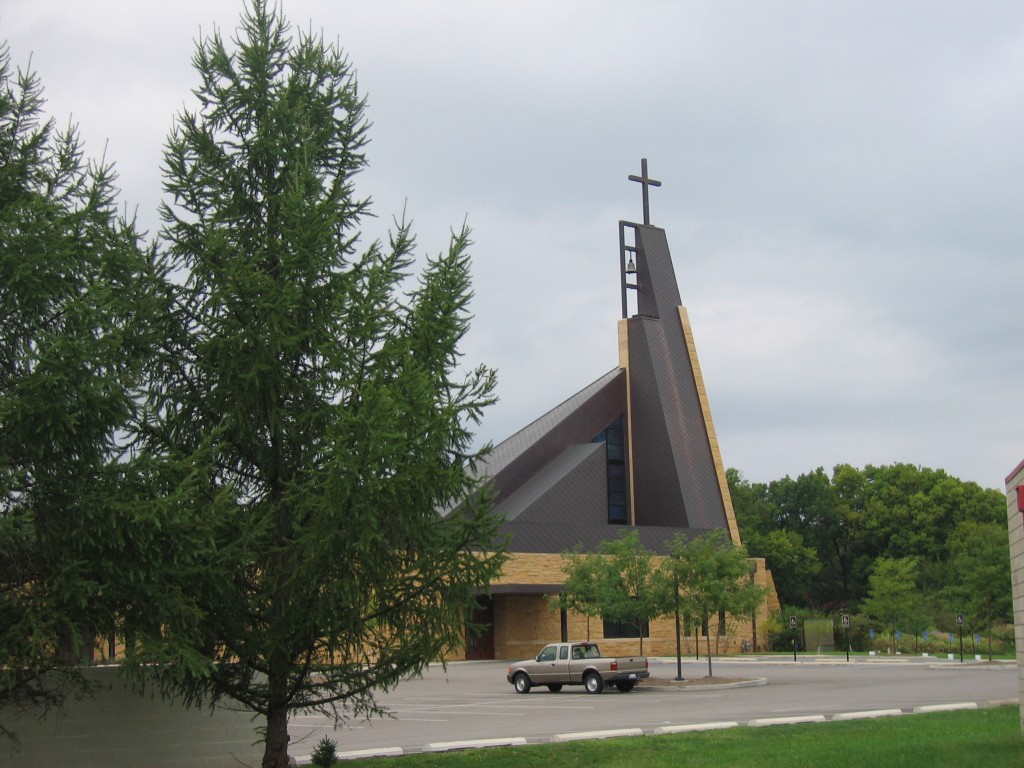 St. Bartholomew
St. Bartholomew
(photo by Ricky Berkey)
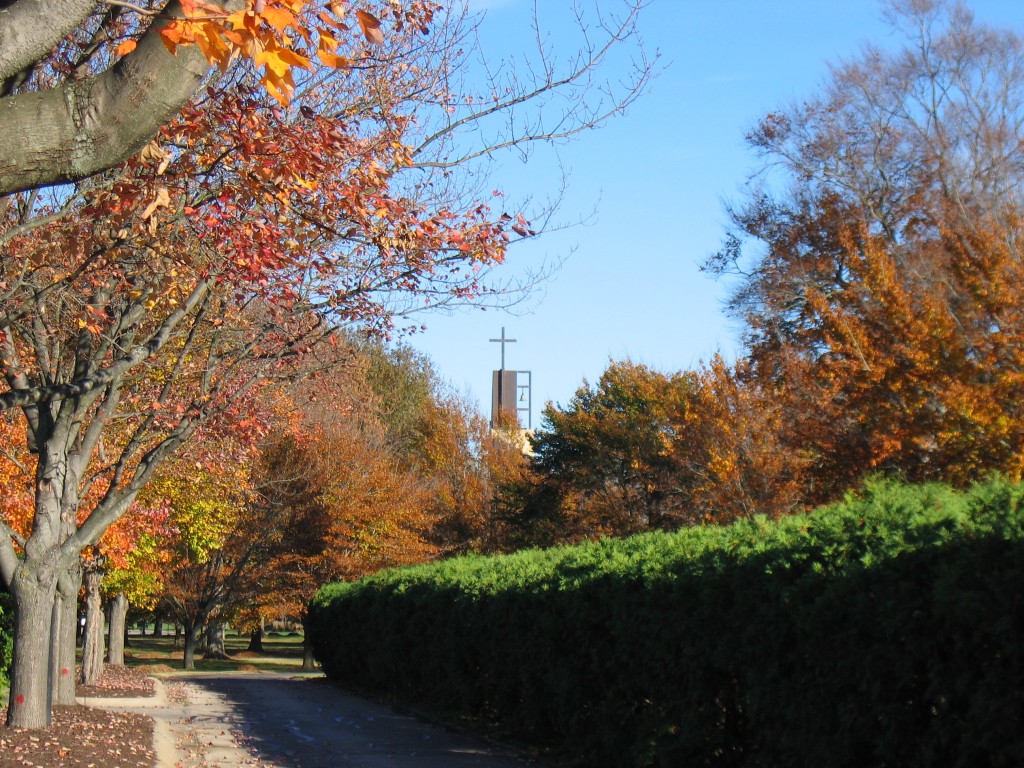 Bell tower can be seen from the nearby North Christian Church
Bell tower can be seen from the nearby North Christian Church
(photo by Ricky Berkey)
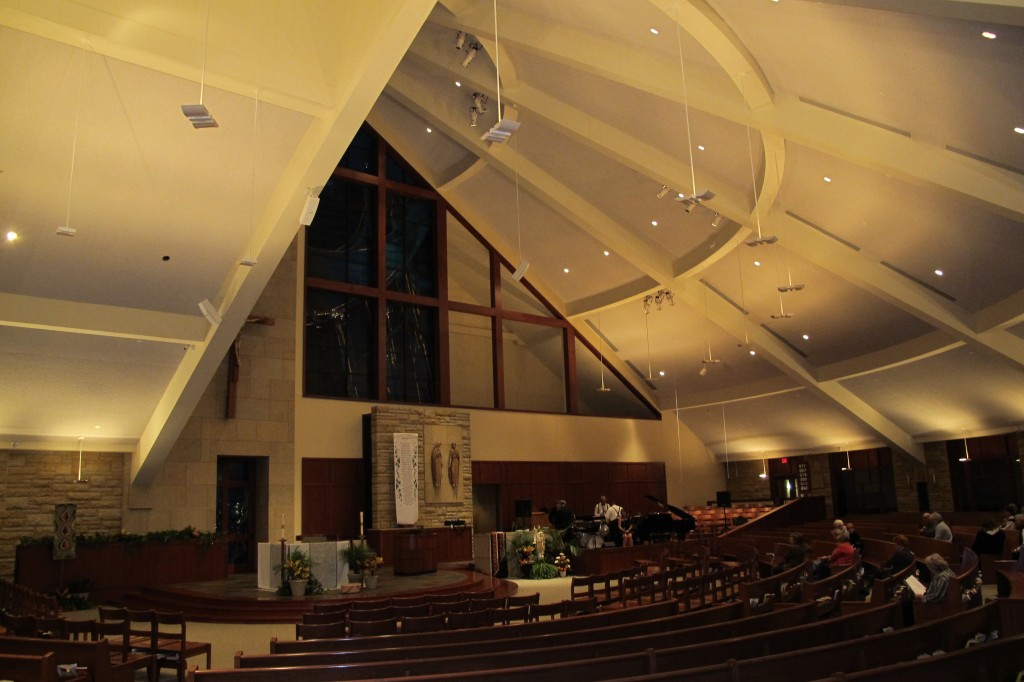 Interior of the sanctuary
Interior of the sanctuary
(photo by Ricky Berkey)
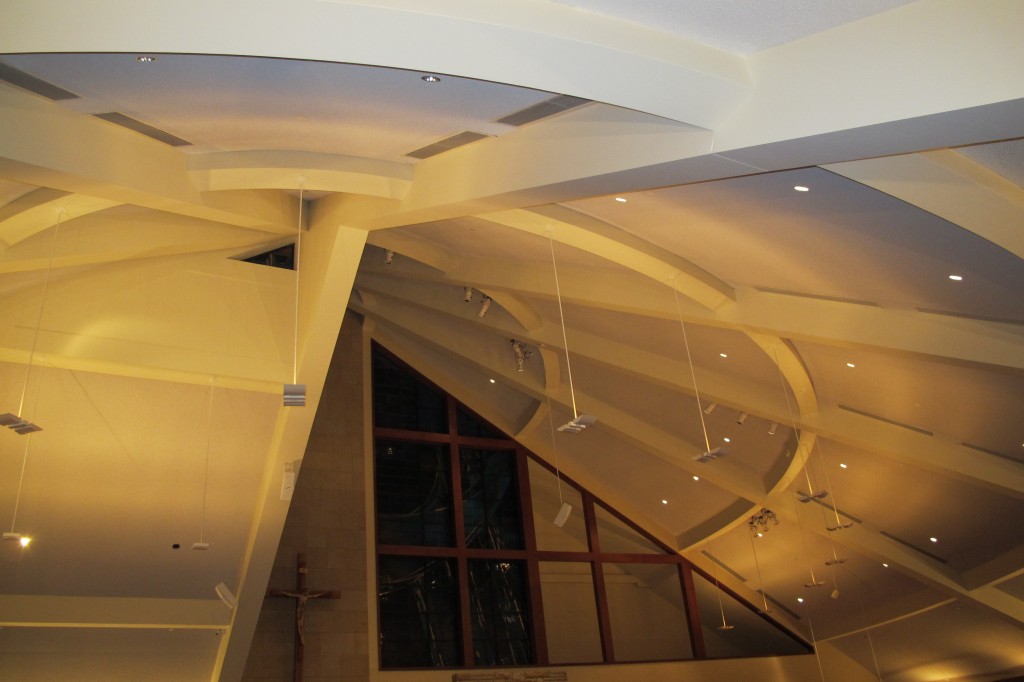 Sanctuary ceiling
Sanctuary ceiling
(photo by Ricky Berkey)
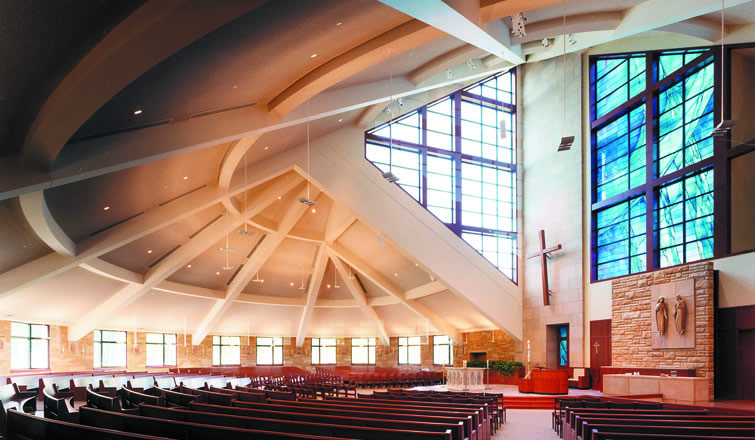 Sanctuary
Sanctuary
(photo used pending permission)
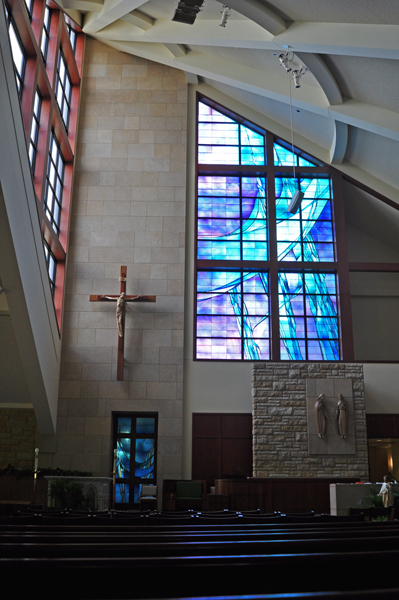 Sanctuary
Sanctuary
(photo used pending permission)
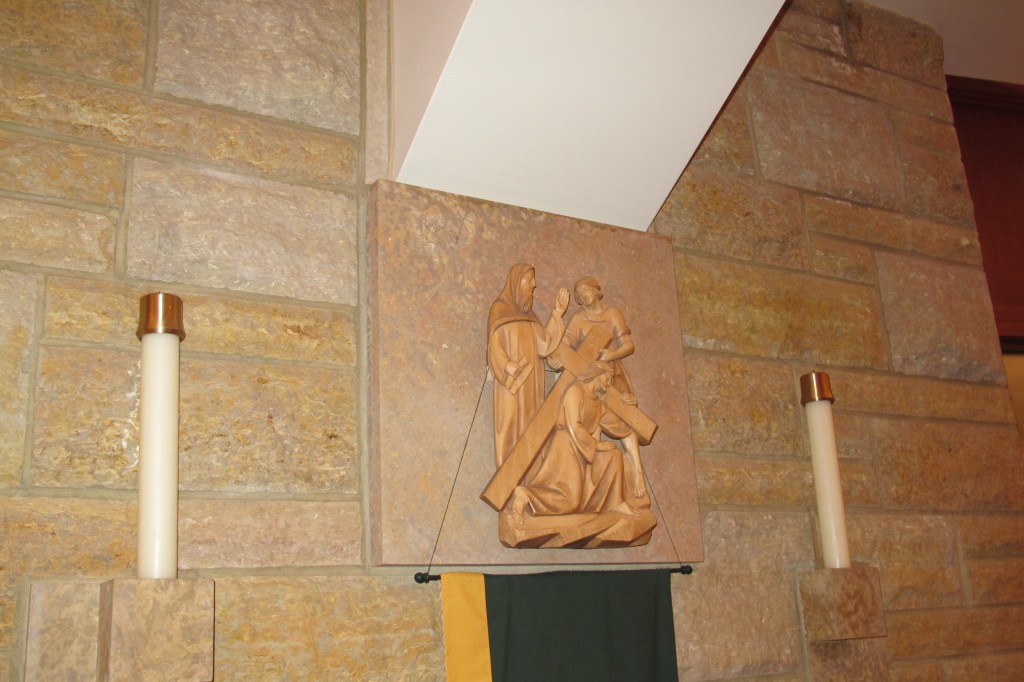 Sanctuary
Sanctuary
(photo by Ricky Berkey)
 School building to the right
School building to the right
(photo by Ricky Berkey)
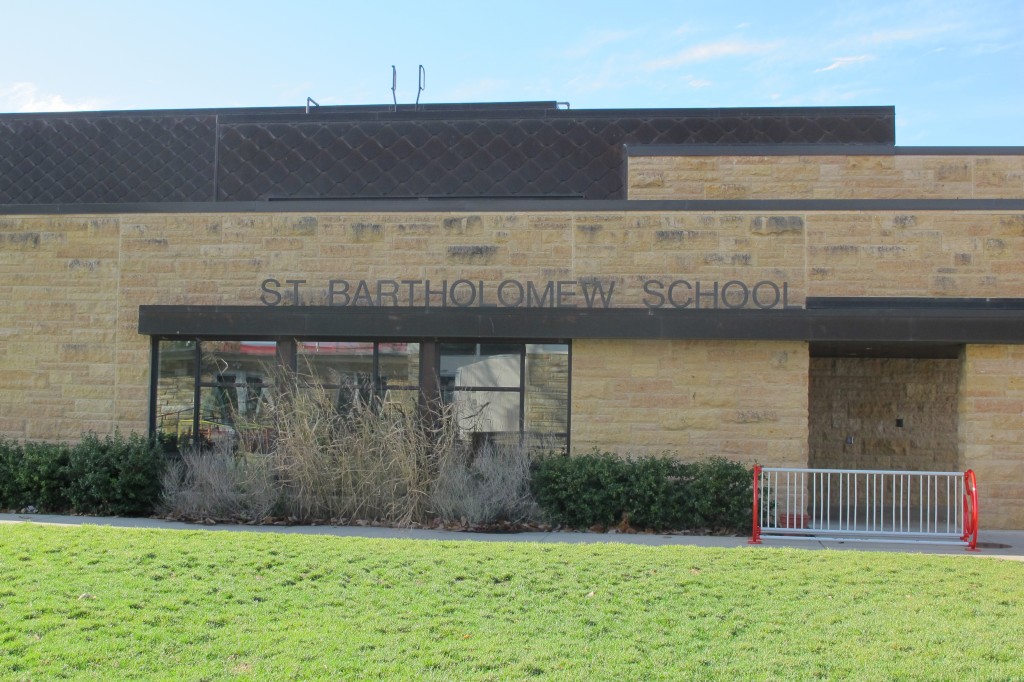 School building
School building
(photo by Ricky Berkey)
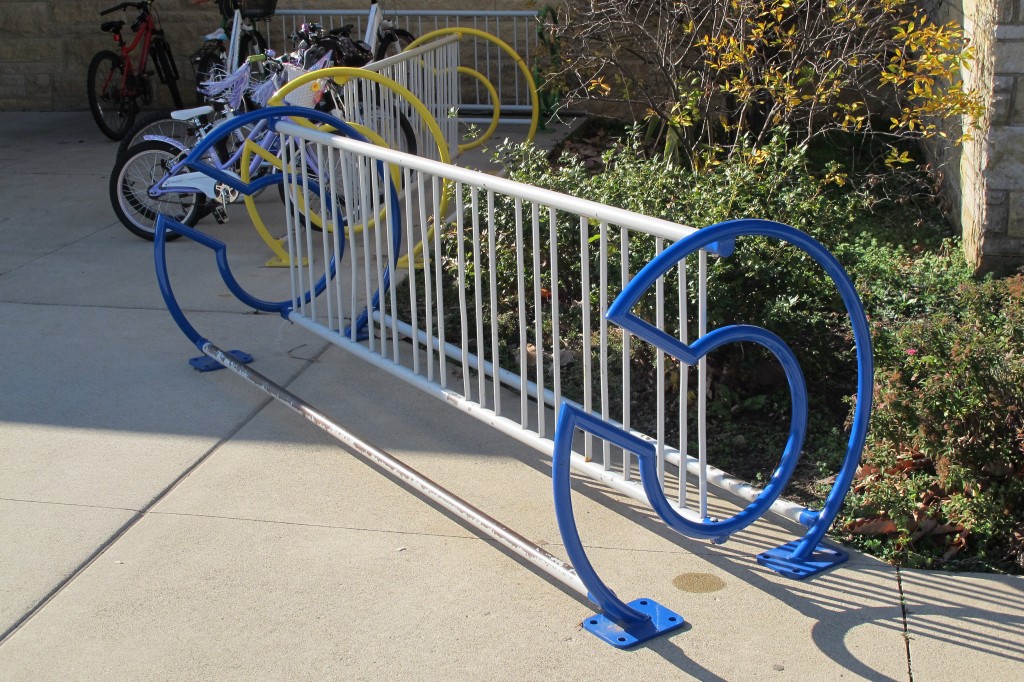 Columbus “C” bike racks at the school
Columbus “C” bike racks at the school
(photo by Ricky Berkey)
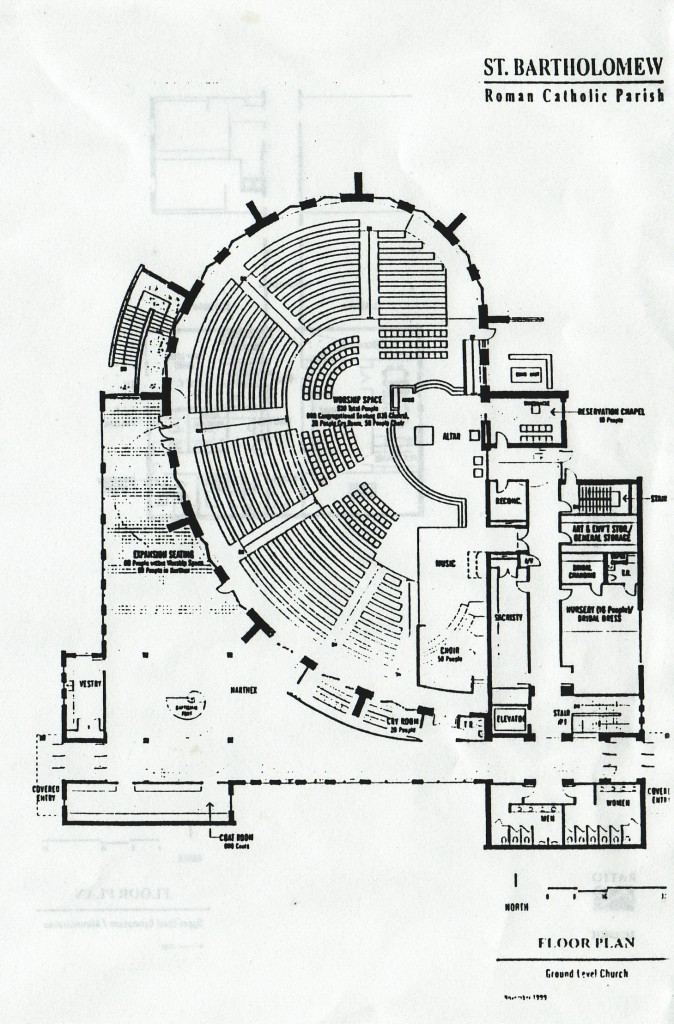 Ground level floorplan, notice the nautilus shape of the sanctuary and the square form of the narthex
Ground level floorplan, notice the nautilus shape of the sanctuary and the square form of the narthex
(used pending permission)
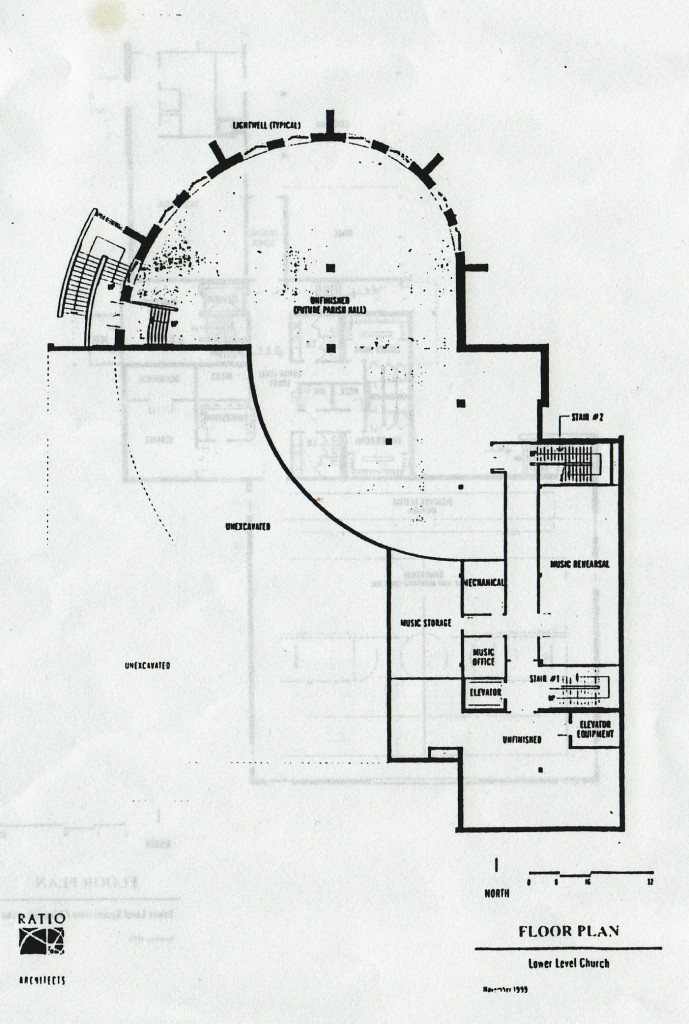 Lower level floorplan
Lower level floorplan
(used pending permission)
The Architects
 Steven R. Risting
Steven R. Risting
- University of Iowa (Liberal Arts)
- Iowa State University (Bachelor of Arts in Architecture)
- Harvard University Graduate School of Design (Master in Architecture)
Steve Risting has been an architect since 1980 and now heads his own design studio, atelierRISTING with a focus on architecture and interior design, as well as architectural photography, lecturing, teaching and writing. He was previously affiliated with CSO Architects of Indianapolis (2003-2013) and RATIO Architects of Indianapolis (1989-2002). Steve lives in Indianapolis with his wife, Carol, and two children.
He has been involved with a number of Columbus, Indiana projects either as lead architect or in collaboration with other firms. Risting had his first experience with Columbus while teaching design classes at Ball State. Like other instructors from many universities, he had brought students to Columbus to study our architecture. While with RATIO architects, he designed the new sanctuary for St. Bartholomew Catholic Church. Risting had first met Fred Koetter as a student at Harvard and later represented CSO Architects in designing the Commons and several other Columbus projects in conjunction with Koetter Kim & Associates.
Selected Steve Risting Projects
1994: Christel DeHaan Fine Arts Center – Indianapolis, Indiana
1998: Emmis Communications HQ – Indianapolis, Indiana
2000 – Brown County Public Library – Nashville, Indiana
2000 – St. Bartholomew Roman Catholic Church – Columbus, Indiana
2008 – Music Building at Indiana/Purdue University at Fort Wayne – Fort Wayne, Indiana
2009 – Renaissance Bay Condominiums – Indianapolis, Indiana
2009 – Commons Office Building (with Koetter Kim & Associates) – Columbus, Indiana
2009 – 2nd/3rd Street Parking Garage – Columbus, Indiana
2011 – The “new” Commons (with Koetter Kim & Associates) – Columbus, Indiana
2012 – Addition to the Commons Office Building (with Koetter Kim & Associates) – Columbus, Indiana
2012 – The Cole (apartments) – Columbus, Indiana
 RATIO Architects
RATIO Architects
RATIO architects is an award winning architectural design and planning firm with offices in Indianapolis and Champaign, Ill. Their many services include architecture, historic preservation, interior design, landscape architecture, urban planning and graphic design. They were founded in 1982 in Indianapolis by architect Bill Browne. Their original focus was on historic preservation and the adaptive reuse of old buildings. Their work in Columbus has included the former Arvin Headquarters Building, St Bartholomew Roman Catholic Church, Mill Race Center, the Columbus Learning Center and the Advanced Center for Manufacturing Excellence (AMCE).
William (Bill) Browne, Jr. FAIA, LEED AP founded RATIO Architects in 1982. Joining forces with Harold Garrison and Lee Alig, the three men opened a five-person firm that included Bill’s sister, as an interior designer, and a graduate architect. They called the firm HDG Architects (HDGA).
At the same time, Harold and Lee decided to set up a development company called Mansur Development Corporation. At that time, developers were doing a lot of historic work due to the 1976 Tax Reform Act which provided significant tax credits for rehabilitated historic buildings. Working in concert with Mansur, HDGA won its first project – a $10 million rehabilitation of the historic 1901 Century Building in downtown Indianapolis. In the years to follow, Browne and Mansur Development worked on other historic preservation projects around the city.
Eventually, Garrison and Alig decided to focus solely on the development company. Bill became president of the architectural firm in 1985, and two years later became the sole proprietor and changed the firm’s name to RATIO Architects. Ratio is based on a Latin Word meaning to reason, is the root word of rational and is the English definition of proportion. The name was chosen to embody RATIO’s philosophy that design should have purpose. Their logo is based on the nautilus, the graphic representation of the Fibonacci mathematical series, which plots the “Golden Mean” section. The Golden Mean is the symbolic expression of perfect proportion, the basis for good design. Their original logo was rendered in the color of patinaed copper. Copper has been used as a signature in many of their projects. Their design for St. Bartholomew Church in Columbus incorporated both the nautilus shape and copper roofing materials.
Through the early years, RATIO continued to lead efforts to renovate and restore historic buildings. Then, the design firm graduated to doing additions to these historic buildings. Later, the firm began to take existing buildings that were in important historic contexts, stripped them to their bare bones and totally redid the interiors. RATIO began to partner with prominent national firms on major new projects and then started doing new projects on their own.
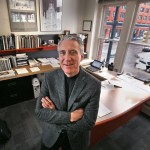 William A. Browne Jr.
William A. Browne Jr.
- University of Illinois – Champaign, Illinois (1977)
- University of Florida – Gainesville, Florida (1979)
- Preservation Institute – Nantucket, Massachusetts
Bill Browne is a native of Indianapolis, Indiana. He received a Bachelor of Science degree in Architecture from the University of Illinois in 1977 and a Master of Arts in Architecture (with a concentration in preservation) from the University of Florida in 1979. He later did a post-graduate program at the Preservation Institute in Nantucket, Massachusetts.
After working locally and on the east coast, he founded HDG architects in 1982 with several partners. He took over the firm in 1988 renaming it RATIO architects. His early work focused on historic preservation and adaptive reuse of historic structures. As the firm has grown it has become multi-disciplined with a portfolio of large and small projects.
Selected Bill Browne Jr./RATIO Projects
Arvin HQ (now BCSC Administration Building) – Columbus, Indiana
St. Bartholomew Roman Catholic Church – Columbus, Indiana
Sandcrest Family Medicine Offices – Columbus, Indiana
Columbus Learning Center (with Kevin Kennon/Kohn Pederson Fox) – Columbus, Indiana
Indiana State Museum – Indianapolis, Indiana
DeHaan Fine Arts Center – Indianapolis, Indiana
Omni-Severin Hotel – Indianapolis, Indiana
Hulman Memorial Student Union at Rose Hulman – Terre Haute, Indiana
The Childrens Museum (Dinosphere) – Indianapolis, Indiana
Indiana Convention Center Expansion – Indianapolis, Indiana
Eugene & Marilyn Glick Eye Institute at Indiana University
2012 Super Bowl Village – Indianapolis, Indiana
Historic Columbus
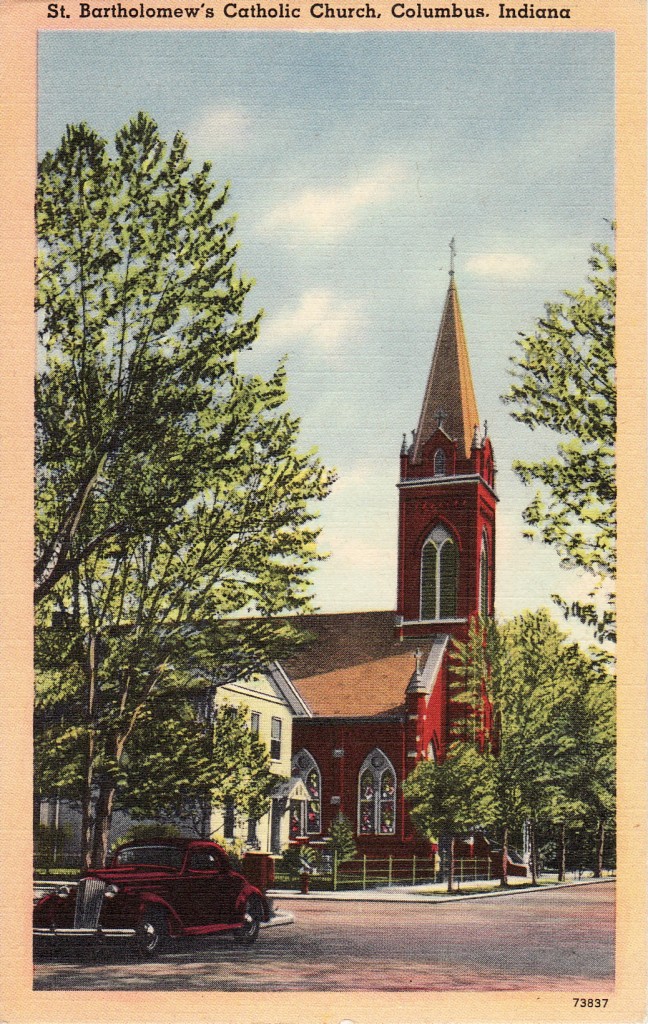
(postcard image used pending permission)
This is the former St. Bartholomew Church at the corner of Sycamore and 8th Streets. The building which dates back to the early 1890’s has been standing empty since the merger of St. Bartholomew and St. Columba. There had been talk in recent years of an adaptive reuse as a community arts facility but current developers seem to have it targeted for demolition.
Links/References
St. Bartholomew Roman Catholic Church: church website
RATIO Architects: designers of St. Bartholomew (Steve Risting’s former firm)
CSO Architects: (Steve Risting’s former firm)
atelierRISTING: Steve Ristings current firm
City of Columbus: official City of Columbus website
Columbus Indiana Architectural Archives
Columbus Indiana Architecture Digital Archives: A small portion of the Columbus Indiana Architectural Archives available online from the IUPUI digital library
3D Models of Columbus Architecture Executed in Google SketchUp:
The Republic Newspaper – Columbus, Indiana newspaper
Bartholomew County Public Library
Historic Columbus Website – David Sechrest’s tribute to Columbus History
Historic Columbus Message Board – a companion interactive forum to the David Sechrest historical website
Bartholomew County Historical Society
 Click HERE for a Calendar of Upcoming Events in the Columbus Area.
Click HERE for a Calendar of Upcoming Events in the Columbus Area.
Click HERE for information about Tours of Columbus Architecture and Design including the Miller House.
 Ricky Berkey
Ricky Berkey
Email me: rickyberkey@gmail.com
